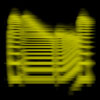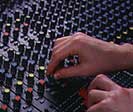| Author
|
How many phrases do you have before a break?
|
Chemogen
IsraTrance Full Member

Started Topics :
166
Posts :
713
Posted : Jan 15, 2008 20:57
|
|
I know that there're no real rules in Psytrance, but there is a general structure. How do you follow it? How many phrases (16 bars/64 beats) do you usually have before a break and how many breaks do you place in your tracks? |

|
|
UnderTow

Started Topics :
9
Posts :
1448
Posted : Jan 15, 2008 21:05
|
A break every 8 bars or things get boring. 
Seriously, there are no rules. Certainly no rules that apply for all genres. There is a huge difference between, for instance, Progressive which goes on for 512 bars before a hihat is added and Full-on NuTek style stuff that changes every quarter beat. 
UnderTow |

|
|
makus
Overdream

Started Topics :
82
Posts :
3087
Posted : Jan 16, 2008 00:19
|
|
Colin OOOD
Moderator

Started Topics :
95
Posts :
5380
Posted : Jan 16, 2008 00:28
|
|
Elad
Tsabeat/Sattel Battle

Started Topics :
158
Posts :
5306
Posted : Jan 16, 2008 04:04
|
yap 
but u can defintly hear in most trance same stuff anyway , it will be 1 beat break , 2 beat break , 1 bar , 2 bars , 4 bars , 8 , bars , 16 bars...
accordint to this u might wanna concider eliminate the end of the pattern and have those breaks
or if u meen something like big break i usualy wont do it if there was one in the last 2 minutes of the track , so it wont end up chillout too much but thats me and my own head , u can defintly feel free to make 3.5 bars breaks and 2 minutes break evry 20 seconds 
        www.sattelbattle.com www.sattelbattle.com
http://yoavweinberg.weebly.com/ |

|
|
the daleks
The Daleks

Started Topics :
34
Posts :
584
Posted : Jan 16, 2008 04:34
|
Quote:
|
On 2008-01-16 04:04, Elad wrote:
u can defintly feel free to make 3.5 bars breaks and 2 minutes break evry 20 seconds 
|
|
you can feel free to do it, but people aren't going to enjoy dancing to it
1 beat break 
best way to learn imo, is to pick some of your favorite tracks, and do some chicken scratching i.e. as your listening count each beat, and make a mark when the breaks or new patterns come in. most common without getting too tedious is every 32 to 64 bars with patterns introduced as you see fit in some kind of progression. although, I have yet to implement this in my own songs 
its also what you are going for, i think- floor moving tracks follow a simple, almost predictable structure (for dancing some predicatability is required). tracks for home listening or substance taking are best to depart from this structure and be unpredicatable or with subtle changes although the rules are always subject to change..
        Gamma Riders EP out now on iTunes and Amazon.com! Gamma Riders EP out now on iTunes and Amazon.com!
The Daleks : www.myspace.com/thedaleksupreme
A-Boys : www.myspace.com/akibaboys |

|
|
bukboy
Hyperboreans

Started Topics :
40
Posts :
803
Posted : Jan 16, 2008 10:34
|
technically, a phrase is defined as a small group of notes which makes up a single musical idea. whereas a section is made up of phrases, i.e. a section is made up of a number of musical ideas.
practically a section which is made up of a question and answer, is made up of two phrases, i.e. a question phrase and answer phrase.
In one example, in "enjoy the silence" by depeche mode, in the chorus which goes
A = "All I ever wanted" B = "All I ever needed"
C = "Is here" D = "In My arms"
E = "Words are very" F = "Unnecessary"
G = "They can only do harm"
AB CD EF G all make up "phrases".
A & B are similar motifs
C & D are simlar motifs
E & F are also motifs . (i.e. motifs are repeated ideas)
but the whole that is made up of 4 phrases is an 8 bar "section". A "section" is defined as one complete large idea. (sections are also repeated in much the same way that phrases and motifs are, but on a larger scale)
A section can be made up of any number of phrases but in the above chorus it was made up of 4.
NOW that a "section" is defined, there are different kinds of sections, balanced, unbalanced, and symmetrical or unsymmetrical.
Balanced section is one where the number of phrases is even(in most cases) or when the phrases add up to an even amount of time, in the above example the section is balanced because ABCD is balanced by EFG (G is twice as long as the others)
An Unbalanced section would be one like ABCDEF (without G to balance)
A symmetrical section is where all the phrases are symmetrical (i.e. they are all just as long) So the example above is not symmetrical.
NOW balance and symmetry are used for different reasons.
balance is used to give sections a feeling of completeness, whereas "unbalance" is used to thwart the listeners expectations(hit them with a new section when theyr not expecting it, or delay the next section so that it builds up tension in expectation).
Symmetry/unsymmetry on the other hand amounts to monotony/interest, so if want to express a monotonous effect then symmetry is the way. Or if u want interest then make ur sections unsymmetical.
Now to finally get to your question. In psy, breaks act as punctuation for sections. not as entities for their own sake.(although if u really want to make a contrast I suppose u could do that once or twice)
So now my answer is - design your sections based on what effect u want them to have, then "punctuate" them.
I hope this is helpful. |

|
|
makus
Overdream

Started Topics :
82
Posts :
3087
Posted : Jan 16, 2008 14:41
|
|
PoM
IsraTrance Full Member

Started Topics :
162
Posts :
8087
Posted : Jan 16, 2008 14:58
|
|
it depends what drugs you take |

|
|
Suloo
IsraTrance Full Member

Started Topics :
87
Posts :
2822
Posted : Jan 16, 2008 15:14
|
yer very nice one!!
thx
        -------......-------...-..-..-..-.-.-.-.- -------......-------...-..-..-..-.-.-.-.- |

|
|
Freeflow
IsraTrance Full Member

Started Topics :
60
Posts :
3709
Posted : Jan 16, 2008 19:11
|
It depends if you want to get people in to trance or just flash with flashy sounds...
|

|
|
soulfood
IsraTrance Junior Member

Started Topics :
10
Posts :
875
Posted : Jan 17, 2008 20:51
|
|
How long's a piece of string? |

|
|
soulfood
IsraTrance Junior Member

Started Topics :
10
Posts :
875
Posted : Jan 17, 2008 20:52
|
Quote:
|
On 2008-01-16 10:34, bukboy wrote:
technically, a phrase is defined as a small group of notes which makes up a single musical idea. whereas a section is made up of phrases, i.e. a section is made up of a number of musical ideas.
practically a section which is made up of a question and answer, is made up of two phrases, i.e. a question phrase and answer phrase.
In one example, in "enjoy the silence" by depeche mode, in the chorus which goes
A = "All I ever wanted" B = "All I ever needed"
C = "Is here" D = "In My arms"
E = "Words are very" F = "Unnecessary"
G = "They can only do harm"
AB CD EF G all make up "phrases".
A & B are similar motifs
C & D are simlar motifs
E & F are also motifs . (i.e. motifs are repeated ideas)
but the whole that is made up of 4 phrases is an 8 bar "section". A "section" is defined as one complete large idea. (sections are also repeated in much the same way that phrases and motifs are, but on a larger scale)
A section can be made up of any number of phrases but in the above chorus it was made up of 4.
NOW that a "section" is defined, there are different kinds of sections, balanced, unbalanced, and symmetrical or unsymmetrical.
Balanced section is one where the number of phrases is even(in most cases) or when the phrases add up to an even amount of time, in the above example the section is balanced because ABCD is balanced by EFG (G is twice as long as the others)
An Unbalanced section would be one like ABCDEF (without G to balance)
A symmetrical section is where all the phrases are symmetrical (i.e. they are all just as long) So the example above is not symmetrical.
NOW balance and symmetry are used for different reasons.
balance is used to give sections a feeling of completeness, whereas "unbalance" is used to thwart the listeners expectations(hit them with a new section when theyr not expecting it, or delay the next section so that it builds up tension in expectation).
Symmetry/unsymmetry on the other hand amounts to monotony/interest, so if want to express a monotonous effect then symmetry is the way. Or if u want interest then make ur sections unsymmetical.
Now to finally get to your question. In psy, breaks act as punctuation for sections. not as entities for their own sake.(although if u really want to make a contrast I suppose u could do that once or twice)
So now my answer is - design your sections based on what effect u want them to have, then "punctuate" them.
I hope this is helpful.
|
|
Do you light cigarettes with a flamethrower  ? ? |

|
|
soulfood
IsraTrance Junior Member

Started Topics :
10
Posts :
875
Posted : Jan 17, 2008 21:01
|
Sorry... that's not helpful at all... I'm tired.. ehm... I don't think you should worry too much about sets of rules. I think there's a good few different solutions to any situation depending on what you want to do.
My advice is to dance to what you have so far and let your body tell you if you need some tension/release/.. a rest etc.
I often find that music that follows traditional structure can sometimes be quite frustrating as it's like packing a unique set of ideas in a box that just aint the right size. If you have a really nice section, you should milk it as long as you can... maybe.
I actually don't often use breakdowns, but that's the nature of the music I make, I like to keep things grooving. I'm not much into cum-shot style breakdowns... but if you do it in a tasteful way it can be pretty... tasty.
Trial and error I guess is the way.
But if you're going to ask other people about structure you might aswell get some music, a pen and paper, sit down and start counting to 4 over and over. Some things can't be put into words.
|

|
|
talolard
IsraTrance Full Member

Started Topics :
64
Posts :
282
Posted : Jan 17, 2008 21:58
|
the first nominee for 2008 post of the year.
Quote:
|
On 2008-01-16 10:34, bukboy wrote:
technically, a phrase is defined as a small group of notes which makes up a single musical idea. whereas a section is made up of phrases, i.e. a section is made up of a number of musical ideas.
practically a section which is made up of a question and answer, is made up of two phrases, i.e. a question phrase and answer phrase.
In one example, in "enjoy the silence" by depeche mode, in the chorus which goes
A = "All I ever wanted" B = "All I ever needed"
C = "Is here" D = "In My arms"
E = "Words are very" F = "Unnecessary"
G = "They can only do harm"
AB CD EF G all make up "phrases".
A & B are similar motifs
C & D are simlar motifs
E & F are also motifs . (i.e. motifs are repeated ideas)
but the whole that is made up of 4 phrases is an 8 bar "section". A "section" is defined as one complete large idea. (sections are also repeated in much the same way that phrases and motifs are, but on a larger scale)
A section can be made up of any number of phrases but in the above chorus it was made up of 4.
NOW that a "section" is defined, there are different kinds of sections, balanced, unbalanced, and symmetrical or unsymmetrical.
Balanced section is one where the number of phrases is even(in most cases) or when the phrases add up to an even amount of time, in the above example the section is balanced because ABCD is balanced by EFG (G is twice as long as the others)
An Unbalanced section would be one like ABCDEF (without G to balance)
A symmetrical section is where all the phrases are symmetrical (i.e. they are all just as long) So the example above is not symmetrical.
NOW balance and symmetry are used for different reasons.
balance is used to give sections a feeling of completeness, whereas "unbalance" is used to thwart the listeners expectations(hit them with a new section when theyr not expecting it, or delay the next section so that it builds up tension in expectation).
Symmetry/unsymmetry on the other hand amounts to monotony/interest, so if want to express a monotonous effect then symmetry is the way. Or if u want interest then make ur sections unsymmetical.
Now to finally get to your question. In psy, breaks act as punctuation for sections. not as entities for their own sake.(although if u really want to make a contrast I suppose u could do that once or twice)
So now my answer is - design your sections based on what effect u want them to have, then "punctuate" them.
I hope this is helpful.
|
|
        Work like you don't need the money. Work like you don't need the money.
Love like you've never been hurt.
Dance like nobody's watching.
natanofgaza@yahoo.com |

|
|
|